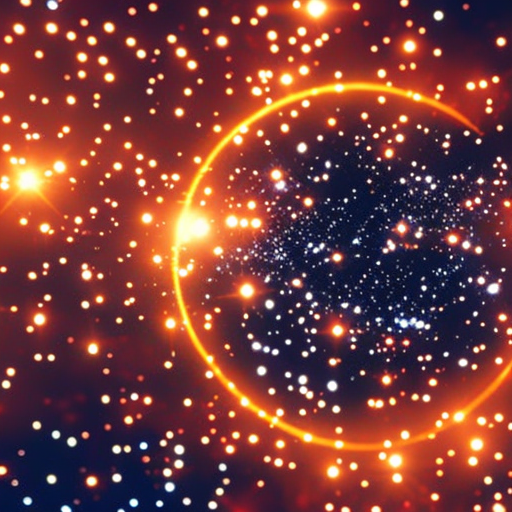Summary:
Stellar evolution is the process by which stars change over time. It begins with the formation of a star from a cloud of gas and dust and ends with its death. During this process, stars go through different stages, including the main sequence, red giant, and white dwarf phases. The evolution of a star is determined by its mass, with more massive stars having shorter lifetimes and more dramatic transformations. Stellar evolution is a fundamental concept in astrophysics and provides insights into the life cycle of stars.
Main Summary:
Stellar evolution is the process through which stars change and evolve over time. It involves various stages and is influenced by the mass of the star. The life cycle of a star begins with its formation from a cloud of gas and dust, known as a nebula. Gravitational forces cause the nebula to collapse, forming a protostar. As the protostar continues to contract, it heats up until nuclear fusion begins in its core. This marks the beginning of the main sequence phase.
During the main sequence phase, stars generate energy through nuclear fusion, where hydrogen atoms combine to form helium. This process releases a tremendous amount of energy, which counteracts the gravitational forces pulling the star inward. The star remains stable and shines brightly during this phase. The duration of the main sequence phase depends on the mass of the star, with more massive stars having shorter lifetimes.
Once a star exhausts its hydrogen fuel in the core, it enters the next phase of stellar evolution. For stars with masses similar to the Sun, this phase is characterized by the expansion of the outer layers, resulting in the star becoming a red giant. As the outer layers expand, the core contracts and heats up, causing the outer layers to cool and expand further. Red giants are much larger and brighter than main sequence stars.
Eventually, the core of a red giant becomes hot and dense enough to initiate helium fusion. This triggers a series of reactions that cause the outer layers of the star to be expelled into space, forming a planetary nebula. The core that remains after this expulsion is known as a white dwarf. White dwarfs are extremely dense and hot, but they no longer undergo nuclear fusion. Over time, they cool down and fade away, becoming black dwarfs.
For more massive stars, the evolution after the main sequence phase is more dramatic. These stars continue to fuse heavier elements in their cores, leading to the formation of elements like carbon, oxygen, and iron. Once the core of a massive star reaches iron, fusion reactions cease, and the core collapses under its own gravity. This collapse triggers a supernova explosion, where the outer layers of the star are expelled into space, leaving behind a dense core called a neutron star or, in the case of extremely massive stars, a black hole.
Stellar evolution is a complex and fascinating process that helps scientists understand the life cycle of stars. It provides insights into the formation of elements, the creation of planetary systems, and the origin of the universe. By studying the different stages of stellar evolution, astronomers can gain a deeper understanding of the universe and the processes that shape it.












